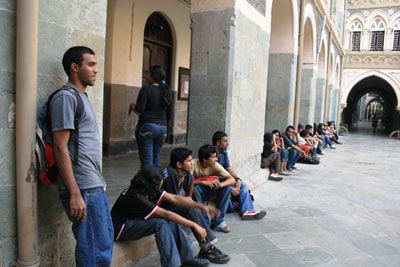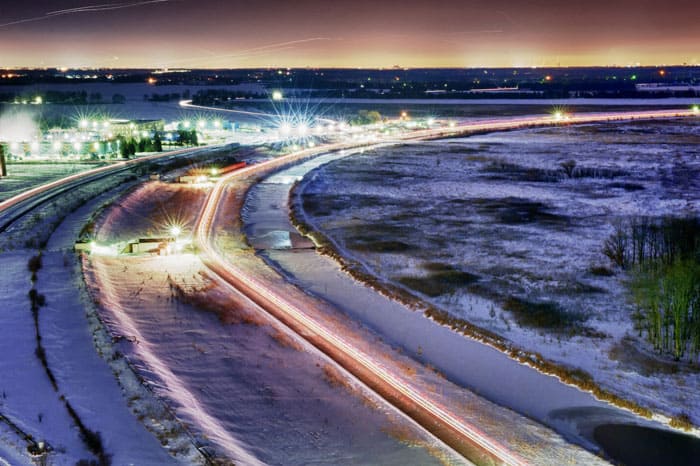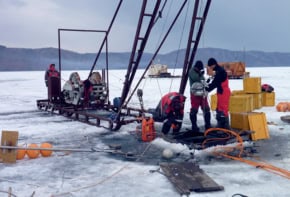This year has been a particularly colourful one for physics, with stories such as the discovery of the Higgs boson making waves in newspaper offices, radio stations and TV channels across the world. Here at physicsworld.com we always like to make a splash about physics and increasingly we are experimenting with multimedia such as video and podcasting to bring you the top stories in exciting new formats. Here is a selection of our audio and visual highlights from 2012

India’s physics rebels
In December Physics World released a special report on physics in India. Alongside the report, Physics World journalist James Dacey travelled to the Indian state of Maharashtra to record an audio documentary about physics education in the country. This podcast looks at how engineering degrees still reign supreme in India, at the expense of fundamental-science courses such as physics, which many feel are in decline. But Dacey tracks down some “rebels”: top students who have rejected the allure of engineering to instead pursue their passion for the physical sciences. He also discovered that the Indian government is starting to recognize that investing in science education at university level could help to create an economy powered by innovation.
On shaky ground
The most dramatic story in the geophysics community this year was the news that seven seismologists in Italy were found guilty of manslaughter, in connection with the 6.3-magnitude earthquake that struck the city of L’Aquila in 2009 and left 308 dead. The men have each been sentenced to six years in prison for issuing false reassurances that a major quake would not necessarily follow the weaker tremors that the region had been experiencing. Since the verdict in October, however, many in the geophysics community have spoken out against the sentence, pointing out how difficult it is to foretell earthquakes. This video, “On shaky ground”, released in February gives an overview of the science of earthquake prediction, explaining why it is so hard to know when and where the next major earthquake will strike.
What is the Higgs Boson?
There are many words commonly associated with academics: clever, free-thinking, hard-working, to name a few of the more favourable. But “brief” and “concise” are not always among those adjectives, particularly when referring to a passionate professor who has been invited to talk about their life’s work. So this year we have launched a new series of videos that sets scientists a challenge in the art of brevity. In the “100 second science” series we ask academics to answer a key question from their field of research within 100 s, using nothing more than a whiteboard and some marker pens. We have already amassed a fair few of these mini lectures, covering everything from dark matter to penguins. One of the standouts so far is Helen Heath of the University of Bristol in the UK, who had the unenviable task of explaining the Higgs boson within 100 seconds – which she managed with just 2 s to spare.
Going where the beam is good
This has been a fantastic year for high-energy physics, particularly with the developments at CERN’s Large Hadron Collider (LHC). But for some members of the global community, these successes are bittersweet. The closure of the Tevatron collider – once an American rival to Europe’s LHC – in September 2011 signalled the end of an era for particle physics in the US, and forced many researchers at Fermilab, the Tevatron’s home near Chicago, to rethink their career plans. In this audio documentary Physics World‘s reviews and careers editor Margaret Harris travels to Fermilab and CERN to learn more about the changing geography of high-energy physics and how it affects individual researchers. In this behind-the-scenes podcast, you will hear senior scientists and early-career researchers talking candidly about their working lives, their reactions to the Tevatron’s shutdown and their plans for the future.
Physics World photo challenge – light in physics
In addition to presenting our news and views, we are also very keen to hear from the physics community. These two-way communication channels are growing wider and more accessible thanks to our social-media activities, such as our popular Facebook fan page and our lively Twitter feed. Another exciting new initiative launched in 2012 is the Physics World photo challenge, in which we invite amateur photographers to share their physics-related shots. We ask people to submit photos on given themes to our Flickr page, and then we choose a selection of our favourites to showcase at physicsworld.com. Some of the most stunning images we received were the ones collected in this article, which relates to the theme “light in physics”. If you are a keen photographer, you might want to tackle our latest photo challenge, which is on the theme of “animal physics”. For details see this blog post about it.





